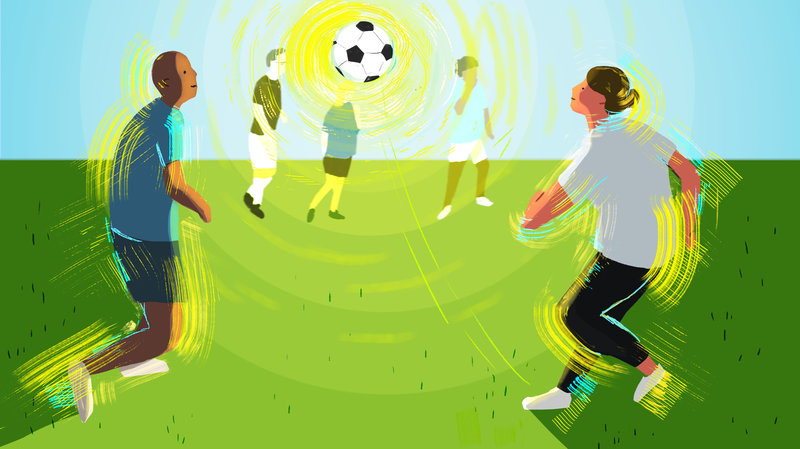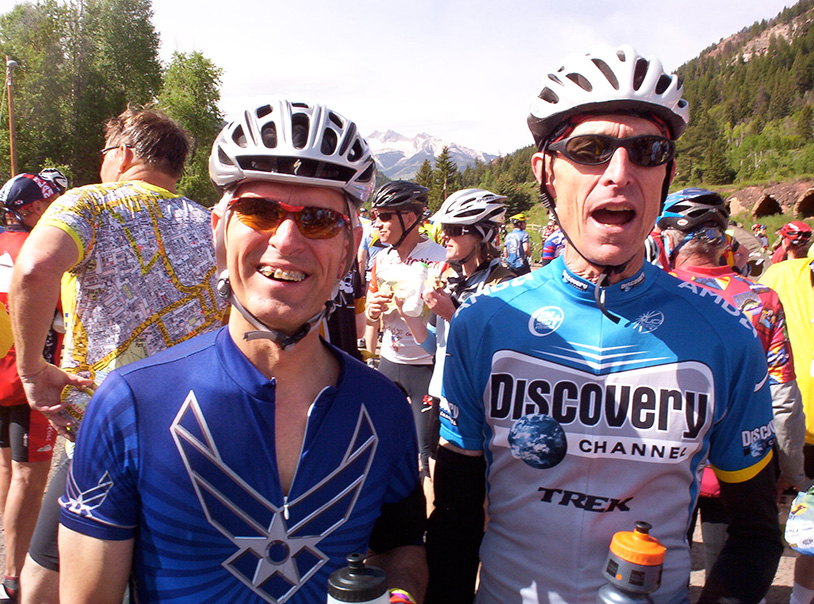


For a Longer Life, Get Moving. Even a Little.
Some of the greatest gains are seen when people shift from being sedentary toward ambling for even one extra hour each day.
Via NYTimes, By
Men and women who move around throughout the day, even if they just stroll or clean the kitchen and do not formally exercise, are less likely to die prematurely than people who almost never leave their chairs, according to a heartening new study of physical activity and mortality. The study, the largest of its kind to date, finds that any activity, no matter how modest, can reduce mortality risks, with some of the greatest gains seen when people shift from being almost completely sedentary toward rising and ambling for even an extra hour each day.
By now, none of us should be surprised to hear that movement and exercise are good for us. Many studies show links between activity and longevity, with more moving almost always tied to longer life spans.
A limitation of these past studies, however, is that in many of them, researchers asked people how active they had been in recent days or weeks, and few of us can recall in detail how we spent our time. In particular, most of us cannot accurately report how many minutes and hours we spent sitting or completing gentle, everyday activities like cooking and cleaning.
Some of those past studies, however, did equip people with activity trackers to objectively monitor their days. But most of those have tended to be small or focused only on men, women or the elderly, making their results difficult to interpret for the general population.
So for the new study, which was published in August in the British Medical Journal, an international consortium of researchers decided to find, combine and reanalyze as much data as possible from earlier studies that had provided volunteers with activity monitors.
To start, the researchers turned to online libraries containing studies about exercise and longevity during which volunteers wore accelerometers. Out of dozens of studies, eight passed the researchers’ strict criteria for methodology and reliability.
Those eight studies used slightly differing statistical methods and definitions of what constituted easy or moderate exercise and activities, though. So, the researchers contacted the authors of these studies and asked if they would reanalyze their original data, using standardized statistical methods and activity definitions.
They all agreed, and the researchers now wound up with data covering 36,383 middle-aged or older men and women from the United States, Britain or Europe who had worn an accelerometer for several days. The data also covered each participants’ general health, body mass, smoking history and other aspects of their lives.
The researchers also had information about participants’ deaths. Each of the eight earlier studies had followed people for an average of about six years, checking their names against national death records.
Now, to tease out the links between how much people moved and how long they lived, the researchers divided the 36,383 men and women into four categories, based on how often and intensely they moved. People who sat for long hours and almost never formally exercised constituted the least-active group. Those who moved about for approximately an hour more each day, even if their activities were untaxing, made up the second-least-active group, and so on.
The researchers next compared activity levels and mortality and found, to no one’s surprise, that the men and women who were the most active were the least likely to have died. That group’s risk of premature death was about 60 percent lower than for the men and women in the most-sedentary group.
More unexpected, people in the second-least-active group also were significantly less likely to have died than those in the least-active group, even though their activities consisted primarily of moseying, housecleaning, cooking or gardening.
Over all, the researchers found, someone’s chances of dying prematurely continued to drop the more he or she moved, up to a plateau at about 25 minutes per day of moderate exercise, such as brisk walking, or 300 minutes a day of light, gentle activity. Beyond that point, people did not gain additional longevity benefits, although their risks of premature death did not rise either.
The relationship between moving more and living longer remained strong even when the researchers controlled for body mass, smoking, diets and other factors and excluded data from anyone who had died during the first two years of the follow-up period, since they might have been inactive because of an underlying illness.
Of course, this was an observational study, and does not show that being active causes us to live longer, only that the two are associated. It also looked almost exclusively at Caucasian adults.
But the findings are encouraging, says Ulf Ekelund, a professor at the Norwegian School of Sport Sciences in Oslo, Norway, who led the new study. They suggest that “all activity counts” in terms of reducing our risk of dying early, he says.
“So, walk,” he advises. “Take the stairs rather than escalators. Use your bike if possible for transportation. Sit less, move more and move often.”
A New Prescription For Depression: Join A Team And Get Sweaty
I’ve believed in this a long time. Exercise and training is a monotonous bore fest only accomplished through discipline and cold commitment. Not the most inspiring motivators. Sports and games are actually “fun!” They build camaraderie, healthy (hopefully) competitive spirit, and social connections.
Ryan “China” McCarney has played sports his entire life, but sometimes he has to force himself to show up on the field to play pick-up soccer with his friends.
“I’m dreading and I’m anticipating the worst. But I do it anyway. And then, it’s a euphoric sensation when you’re done with it because you end up having a great time,” says McCarney.
McCarney was just 22 when he had his first panic attack. As a college and professional baseball player, he says getting help was stigmatized. It took him six years to get professional support. He still struggles with depression and social anxiety, but says exercising helps him — especially when it’s with his teammates.
Research shows exercise can ease things like panic attacks or mood and sleep disorders, and a recent study in the journal, Lancet Psychiatry, found that popular team sports may have a slight edge over the other forms of physical activity.
The researchers analyzed CDC survey data from 1.2 million adults and found — across age, gender, education status and income — people who exercised reported fewer days of bad mental health than those who didn’t. And those who played team sports reported the fewest.
One of the study’s authors, Adam Chekroud, an assistant adjunct professor at Yale’s School of Medicine, thinks team activity could add another layer of relief for sufferers of mental illness.
He says there are biological, cognitive and social aspects to mental illness.
“Some sports might just be hitting on more of those elements than other sports,” he says. “If you just run on a treadmill for example, it’s clear that you’re getting that biological stimulation. But perhaps there are other elements of depression that you’re not going to be tapping into.”
Now, this study only shows an association between group exercise and improved mental health, and can’t prove that the one causes the other. But, given what is known about depression in particular, it adds up, says Jack Raglin, a professor in the department of kinesiology in the School of Public Health at Indiana University, Bloomington.
People who are depressed often isolate themselves, he says, so exercising in a group setting, “can help alleviate symptoms and deal with this very pernicious symptom of depression.”
Group exercise or team sports might also have an edge over other forms of exercise because they add an element of accountability, says Raglin. He did a study finding that couples who started an exercise program together had a lower dropout rate than those who started one on their own.
The study showed that “very simple forms of social support can be beneficial,” he says.
Scientists don’t know the exact mechanism that makes exercise elevate mood and decrease anxiety, but there is a body of research to show that it does work on the short and long term.
“If you conceptualize exercise as a pill it means, well it’s a rather small pill and easy to take and easy to tolerate,” says Raglin.
One limitation of the Lancet Psychiatry study is the data is based on patients self-reporting their symptoms. Dr. Antonia Baum, a psychiatrist and the past president of the International Society for Sports Psychiatry says patients don’t always give an accurate picture of their mental health. She says the study is an important step in this research field, but the conclusions shouldn’t be taken as scientific gospel.
“We are animals. We are meant to move and if we don’t, a lot of systems slow down, including our mood and cognition,” says Baum. “So it makes intuitive sense that exercise is beneficial, but it’s nice to try to start to wrap our arms around being able to quantify and qualify that in some ways.”
Baum says she works with each of her patients to incorporate exercise into their lives. And she says this study will be a good jumping off point for more research on team sports and mental illness.
But, Baum and other researchers say getting someone who is depressed to start exercising is easier said than done.
“It’s all well and good to conclude that exercise whether it’s done as a solo or a group pursuit is beneficial, but to get patients to do it is another matter and when you have a depressed patient motivation is often lacking,” she says.
Chekroud says getting patients in general to stick to any kind of therapy is challenging.
“It’s not just exercises that people stop doing, they also stop taking medications. They stopped showing up for therapy,” he says. “Adherence is a big problem in health care right now,”
He says the study’s findings could lead to more tools to help people reduce the overall burden of mental illness, now the leading contributor to the global burden of disability.
“The field is really crying out for things that we can do to help people with mental health issues,” says Chekroud.
For McCarney, team sports have helped him get a handle on his symptoms, he says. Before social gatherings, he often feels claustrophobic and panicked, but when he works through the anxiety and gets onto the field, he says it’s always worth it.
“It just gets you around people which I think is another huge thing when you’re trying to maybe break out of a depressive cycle,” he says.
How to get started
For some people, the idea of joining a team or any kind of group fitness activity is terrifying. Here are a few tips for getting started.
Find a sports ambassador. Raglin recommends finding a “sports ambassador,” a friend who can connect you with a group sport or activity. The friend can get you up to speed on the sport and what’s expected of you. Team sports may feel like a leap of faith, says Baum. But, she says the rewards are worth it. “It’s like playing in an orchestra — the sum being greater than the parts — truly thrilling when it all comes together,” she says.
Match your skill level. It’s not hard to find amateur sports teams to join, on sites like meetup.com. A lot of workplaces also have team sport activities, but Raglin says you make sure the skill level is right for you. You’re more likely to have a good experience and want to go back. “There is nothing worse than being on a team where the skill or intensity of the players is way above or below your own level or the level of competition you were looking for,” Raglin says.
Join a run or bike club. If you’re not into team games, go to your local run shop or bike shop to find run communities, bike clubs or community rides to join. Raglin recommends the November Project, which is a free fitness program with chapters in major cities around the world that hosts workouts.
Put money on the line. If you really aren’t into team activities, Baum says getting a personal trainer or signing up for a gym can “help add a social element, and that all important accountability.”
Try the obvious thing first. Baum says to look at the activities you’ve done throughout your life and think about which ones worked best for you. She says she sometimes takes her patients running or walking with her for a therapy session to start modeling the types of exercises that could work for them.

Pompous Cyclists Join the Ranks of the Rude
Used to be I was happy to take a walk along a path away from cars and smelly, noisy, dangerous street traffic. Nowadays? Not so much.
I’ve written here about deranged drivers of cars and trucks on the roads and highways. Now its time to draw a comparison to other kinds of drivers. Specifically, people on bikes, bicycles. Or, as those who must observe the new stylish market-centric vernacular refer to, cyclists.
Cyclists are not all the same. In fact, barring the altogether separately cultured, and commercially tooled bike messenger, there are really two fairly distinct groups of cyclists. Those who ride for fun, recreation, and leisure, and those who ride for fitness and/or competition. Its this second group I have a beef with. Those who ride road bikes.
Ever since Lance Armstrong, the Tour De France, and the oh-so-exploitive marketing forces behind the ever lighter, ever aerodynamically conceived, ever inflated priced road bikes came together in a synergistic harmony, cycling athletes in this country have been consumed in the spirit and flesh of cycling OCD.
Ok, that’s fine. Whatever you need to lose yourself in. Just don’t hurt anybody. Right? WRONG!
I don’t know what part of the mind is responsible for it, but the behavior of road bikers in my area (Hamden and New Haven, CT), seem to be missing a component of safety best practice that any (ok. most.) car driver would have instinctively. The part of the brain that tells people in front of them, they are coming up besides them and will be passing. Yes, its easier in a car because the assumption is that the driver in front has a rear view mirror they use. But, with a pedestrian, or another cyclist, there is never a rear view mirror. And, btw, nor should there be! The onus on bikers and walkers, is on the one behind. Not the one in front. Therefore, the best practice, the safe practice is to call out “On your left!”, “Left side!” and so on.

Admittedly, this image is unrelated context, but the sentiment of many cyclists, is that anyone not of their breed is in their way, and WE need to yield to THEM. The definition of arrogance.
They are consumed and focused on asphalt, concrete, gear shifting, weight distribution, how they look in their pompous outfits, status driven helmet and shoe choices, and whatever else they can’t bear to tear themselves away from to alert those in front they are coming up behind. For lack of another explanation as to why they ignore common courtesy towards others on the bike and jogging paths, they seem to act as if they are better than others who don’t belong to the same religion as they do. Shelling out thousands of dollars on equipment and clothing to mimic the real professionals who race as a lifelong career. They seem to act like they should have the priority. That it is everyone else who should yield to them. Everyone else that should be looking back constantly over their shoulders because there will be no warning when they come up behind you six inches away from catastrophe.
Any and all cyclist associations and bike clubs have rules of the road printed out for their members. They are often printed on signs at trail heads and along the way. The common courtesy of hailing from behind, is well ingrained in the book of good behavior. Unfortunately, most of the cyclists who need to do it the most, don’t. They are an embarrassing, selfish, arrogant bunch of goofballs. They are a scourge on peaceful walks, relaxing bike rides, and completely upset the karmic balance of nature. Yeccch!
Here are some sympathizing links:
http://www.rockymountainnews.com/news/2008/jun/19/most-fellow-cyclists-rude-arrogant-jerks/
Do this! NO, DO THIS! Not that! THIS!
Are you tired of reading anti-exercise philosophy articles? Here’s an anti-anti-exercise philosophy article.
I’ve written here before about my own view on exercise fanaticism. Not that there isn’t enough around elsewhere. I’ve decided that people who flame the type A fitness addicts, have inadvertently encouraged them to increase their compulsive focus on running seven miles a day, riding road bikes till their prostate is crushed, donning the pompous outfits in bizarre idolatry of French athletes, climbing every known precipice, building muscle till it resembles an off road bike path.
As much as I started liking this recent article in the NY Times, I ended up not liking it also. I like it because it drew conclusions that support the idea of an over zealous culture on fitness, athletically, scientifically, and commercially. That’s well worth expounding on, but still, in the end, its a four column 1/2 broadsheet article on the topic. Well, maybe this corks the dam a little. How much more can we talk about this stuff? Don’t answer that.




